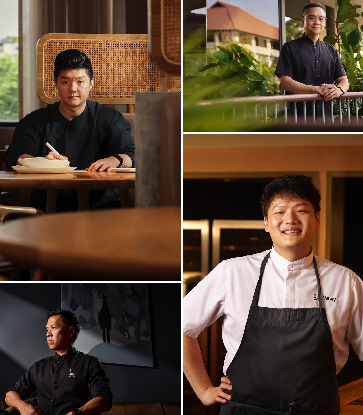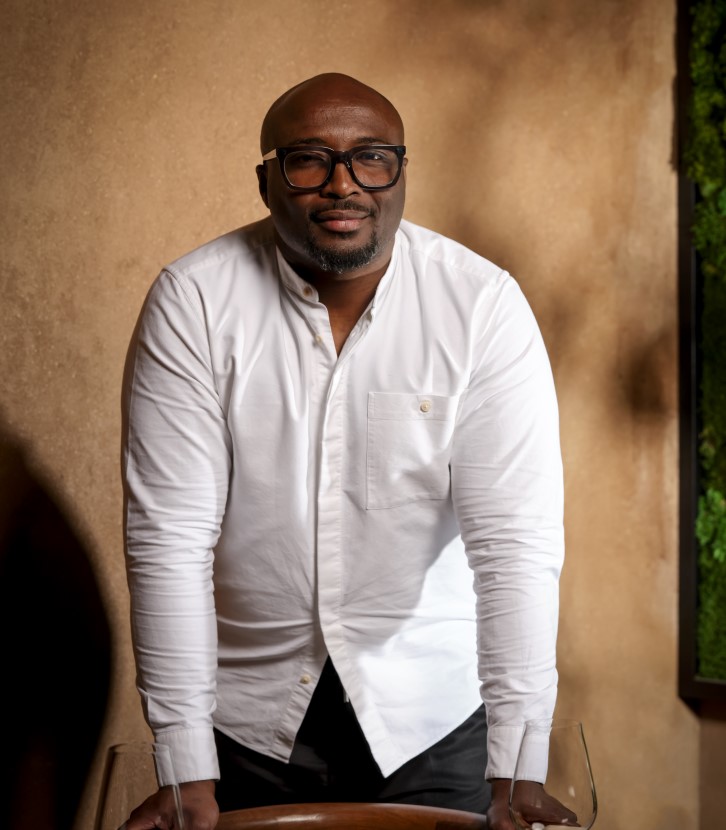“Perhaps that is why sushi has a special place in my heart,” he muses, adding that he has dedicated 20 years to perfect the art of making sushi. Kimura’s hard work has paid off as his fine-dining sushi restaurant Sushi Kimura was the only Japanese restaurant in the new list of one-Michelin-starred restaurants in the results of this year’s MICHELIN Guide Singapore.

Kimura says: “We have been sourcing directly from some of my fisherman friends so it depends really on their catch of the day. For autumn, we usually have fresh ikura, katsuo (bonito) and sanma (pacific saury).”
Other ingredients include high-mineral spring water from Hokkaido that is used to cook the rice and other Edomae-style dishes, and a potent organic vinegar from Miyazu city in Kyoto.

Diners can choose to eat the rice from the bowl or wrap it with shin nori, the highest grade of seaweed that is obtained from its first harvest in the Ariake sea in the south of Japan.
Other seafood that restaurant offers are seasonal white fish that brim with umami flavour such as tai (red snapper), hirame (flounder) and hata (grouper).
The Journey Of Making Sushi
From a young age, Kimura’s interest in cooking was piqued by watching his mother whip up dishes for family meals. “My first dish was an attempt to make a sunny-side-up egg,” he says. “But, it ended up becoming scrambled eggs.”

In 2012, Kimura uprooted to Singapore to be part of the opening team of the one-Michelin-starred Sushi Ichi and he was also the executive chef of Hashida Sushi.
As a chef, I have always been aware of the prestige of the guide and that it recognises the most talented chefs. My first encounter with the Guide was learning about the late French chef, Joel Robuchon, when I attended Hattori Nutrition College. It left a huge impression on me as his public persona was very different with what one would commonly associate with chefs. It’s really about respectability.
How was it like when Sushi Kimura received a Michelin star this year?
I was definitely surprised as it was totally unexpected. We are a simple place with a small team and I feel very humbled that the inspectors enjoyed and recognised us as a world-class restaurant.
How did you celebrate this achievement?
We shared the special moment together with the restaurant team with a celebratory meal and lots of drinks.
As a chef, what does having a Michelin star mean to you?
It is a testimony to the persistence, commitment and dedication that I have endured since I decided to become a sushi chef more than 20 years ago.
How do you think having a Michelin star will impact your career?
It’s still the same for me and the restaurant because my focus is always to make nice sushi for my guests and to make them happy. We will continue to work hard with our different partners especially my fisherman friends to bring in the best possible ingredients.
What advice do you have for young chefs aiming for Michelin stars?
The focus should not be on recognition. First and foremost, one should have a steadfast commitment to the craft of cooking and dedication to customer experience.
RELATED: Click here for more The First Day I Got My Michelin Stars story




















